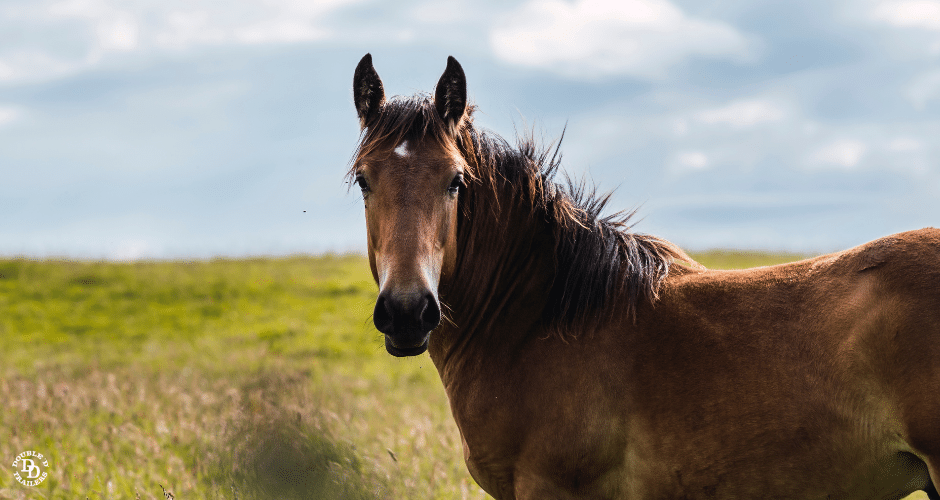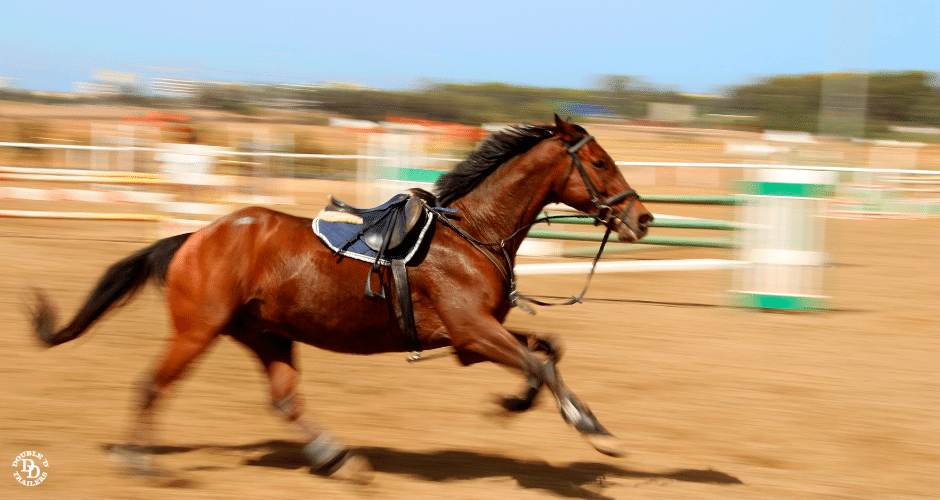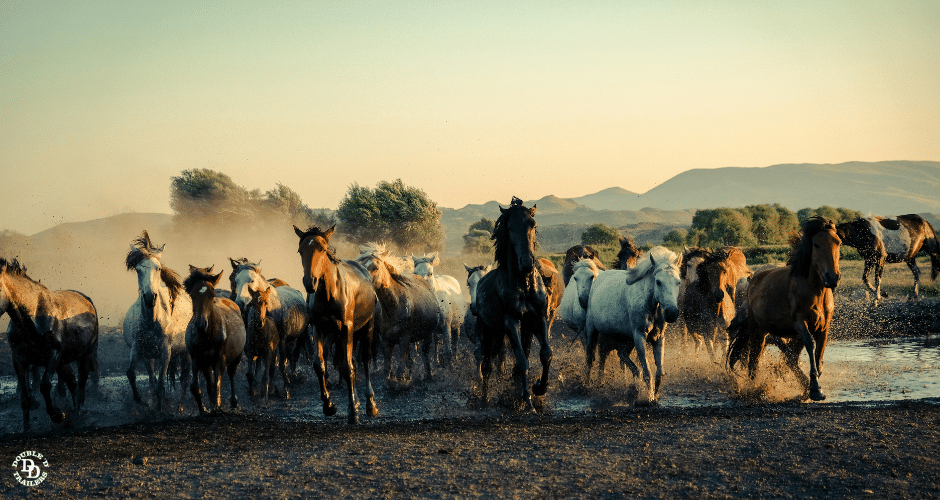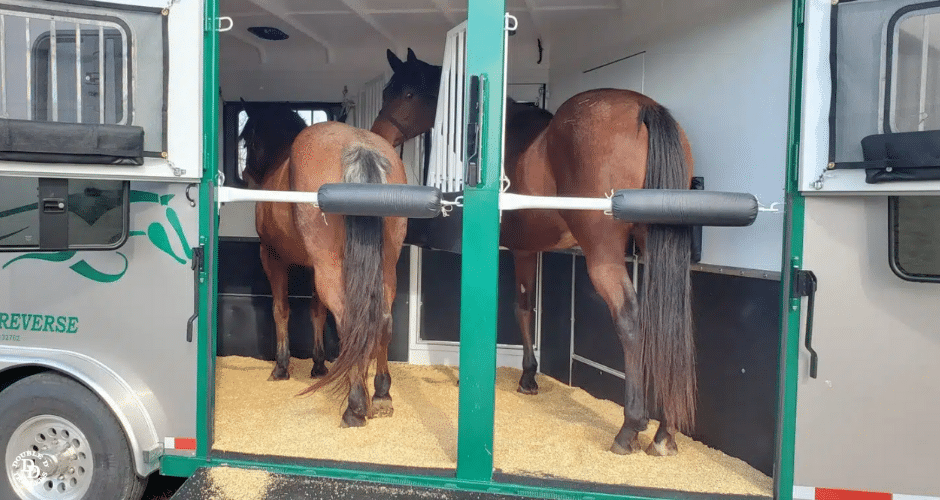53 Random Horse Facts That’ll Make You Say “Whoa!” (Weird, Cool & True)
Horses are full of surprises.
From sprinting faster than a car to sleeping while standing up, these incredible animals have some truly wild quirks. We’ve rounded up 53 of the most random, weird, funny, and downright fascinating horse facts… some of which might even change how you think about horse care and trailer design.
Our team at Double D Trailers gathered these from expert sources and years of firsthand experience. If you're a horse lover, you’re bound to learn something new.
🐴 Quick Horse Facts at a Glance:
- 🧠 Horses remember faces and emotional tone.
- 💤 They can sleep standing up.
- 🧬 All domestic horses trace back to just two ancient breeds.
- 🏃♂️ One sprinted at 55 mph.
- 💧 Horses drink 25+ gallons of water daily.
Skip ahead to:
Weird Horse Facts
1. Why can’t horses burp or vomit?
A horse's stomach has a powerful muscle ring (the cardiac sphincter) that prevents food from coming back up. This prevents vomiting even under extreme pressure like running.
2. Can horses get sunburned?
Yes, especially those with pink skin. Sun protection is a must in the summer.
3. How long does it take a horse to regrow a hoof?
Roughly 9–12 months. Hooves grow faster in warmer seasons.
4. How can you tell if a horse is cold?
Feel behind their ears. If that area is cold, so is your horse.
5. What’s with the horse "smile"?
When a horse curls its lip, it's using the flehmen response to detect smells more clearly.
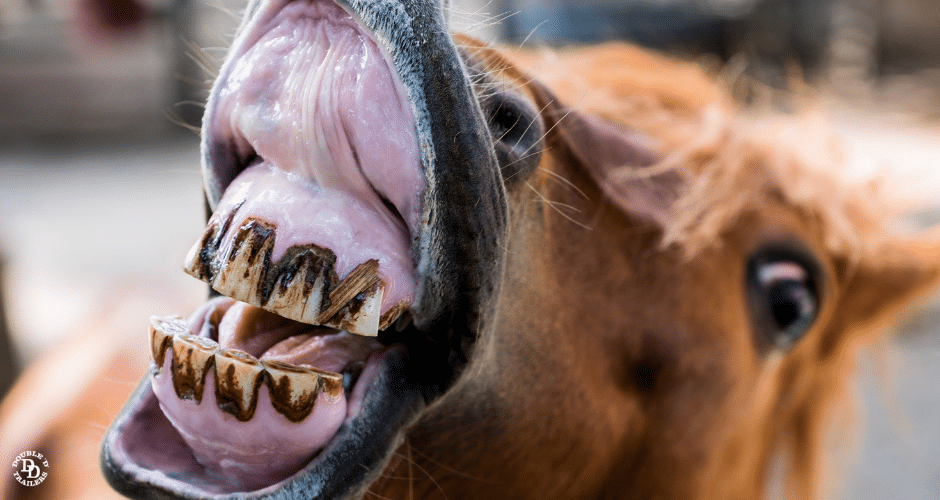
6. Do horses have more teeth than brains?
In terms of volume, yes! Their teeth take up more space in the head than their brains.
7. How big is a horse's brain?
About 22 oz. which is roughly half the size of a human brain.
8. Can horses sleep standing up?
Yes! Thanks to a stay apparatus in their legs. But they still need to lie down for REM sleep.
9. Why don’t horses in a herd sleep all at once?
One horse always stays alert as a sentry to watch for danger.
10. Do horses talk to each other?
Yes, through whinnies, neighs, snorts, and posture.
11. What was the first cloned horse?
A Haflinger mare named Prometea, cloned in Italy in 2003.
12. How much saliva does a horse produce?
Around 10 gallons a day, requiring 5-10 gallons of water.
13. Can you tell what a horse is looking at?
Yes, they usually look in the same direction their ears point.
14. Can horses breathe through their mouths?
No. They’re obligate nasal breathers and must breathe through their noses.
🚛 Real Fact, Real Design: Horses can’t vomit or breathe through their mouths; a reminder of how important ventilation and airflow are in trailer design. See how Double D Trailers builds with horse physiology in mind.
Funny Horse Facts
15. Do horses have a sense of humor?
Yes! They play, tease, and even prank one another.
16. Can horses read your mood?
They pick up on human expressions and remember emotional states.
17. How many bones do horses have?
Most have 205, just one less than humans. Arabians have 201.
18. Do horses have favorite flavors?
Yes! They love sweet and reject sour or bitter foods.
19. Why are most foals born at night?
To reduce vulnerability to predators in the wild.
20. What’s the fastest a horse has ever run?
55 mph by a Quarter Horse named A Long Goodbye.
Cool Horse Facts
21. Can newborn foals walk?
Yes! Within 2 hours, they’re usually standing and nursing.
22. How long is horse pregnancy?
Around 11 months. Breeders aim for spring births.
23. Do male and female horses have different teeth?
Yes. Males usually have 40 teeth; females have 36.
24. Are horse eyes really that big?
Yes. They’re among the largest of any land mammal.
25. How well do horses see?
Not 20/20, but fairly sharp; 20/30 to 20/60.
26. How wide is a horse's vision?
About 350°! But only 55–65° is binocular (depth-perceiving).
27. Do horses still play a role in cultures today?
Yes, especially in China and countries with strong war traditions.
28. Can horses see at night?
Better than humans, but they adjust slowly to light changes.
29. What’s the "frog" on a horse’s hoof?
A shock absorber and pump for circulation called the horse's "second heart."
30. How big is a horse’s heart?
Usually 9–10 lbs. Secretariat's heart was 21–22 lbs.
31. When did horses first appear?
About 50 million years ago. The first was Eohippus.
32. How many ear muscles do horses have?
Sixteen which lets them rotate ears 180°.
33. Are horses smart?
Very. They rank just behind elephants in memory.
🐎 More Than Just Muscle: From their giant hearts to sharp memories, horses are more complex than they appear. That’s why we engineer every trailer to fit their real needs. Browse custom trailer models.
Just Plain Random Horse Facts
34. Are horses colorblind?
No. They see greens and yellows well, but not purples.
35. What are hooves made of?
Keratin, the same protein in human hair and nails.
36. What’s the most expensive horse ever sold?
Fusaichi Pegasus, at $70 million in 2000.
37. Who invented the horse trailer?
Lord George Bentinck in the 1830s.
38. Who proved all 4 hooves leave the ground during a gallop?
Eadweard Muybridge, using photography in 1872.
39. Do horses prefer rear-facing travel?
Yes, it’s less stressful and easier on their body.
40. What’s the oldest known horse?
"Old Billy" lived to be 62 in England (1760–1822).
41. What’s the only true wild horse left?
The Przewalski’s horse, native to Mongolia.
42. How many Americans work in the horse industry?
Around 4.6 million with a $122 billion economic impact.
43. How many horses are in the world?
About 58–60 million.
44. How many horse breeds exist?
Roughly 600, but all descend from just two ancient types.
45. What are the five horse breed categories?
Hot-blooded, cold-blooded, warmbloods, ponies, and miniatures.
46. How do wild horse herds work?
Led by a stallion with several mares and young. Colts are driven off to form bachelor herds.
47. What is a "hand" in horse height?
One hand = 4 inches. Tallest on record: Sampson at 21.2 hands.
48. What’s the longest jump by a horse?
27 feet, 6 3/4 inches by Something in 1975.
49. What’s the highest jump?
8 feet, 1 1/4 inches by Huaso in 1949.
50. How much water do horses drink?
At least 25 gallons daily, more in hot climates.
51. What’s a zebroid?
A hybrid of a zebra and horse, donkey, or pony.
52. Why do some horses have red ribbons on their tails?
It signals they kick... stay clear!
53. Do horses grieve?
Yes. They form bonds and mourn lost companions.
Want to Learn Even More About Horses?
Check out:
- "Wolf Teeth" and Other Curious Facts About Horse Teeth
- 13 Things You Never Knew About Horse Trailer History
- 37 Wild, Incredible, and Most Unbelievable Horse Facts from History
- 7 Easy DIY Horse Treats You Can Make at Home
- The Most Popular Horse Breeds in the United States Are...
Or explore how we design trailers that put your horse’s health, comfort, and safety first.
👉 Shop Safe Custom Horse Trailers
Frequently Asked Questions
Q: Can horses really sleep standing up?
Yes, thanks to their stay apparatus. But they still need to lie down occasionally for REM sleep.
Q: Are horses colorblind?
No. They see yellows and greens well but struggle with purples.
Q: Why do horses spook so easily?
Their wide monocular vision helps detect motion but lacks depth perception making sudden movements seem threatening.
Q: What is the frog in a horse’s hoof?
A V-shaped structure that acts as a shock absorber and helps circulate blood.
Q: Is it true horses can’t vomit?
Yes. Their stomachs have a one-way valve, making vomiting physically impossible.
Q: Why do horses face backward in some trailers?
Studies show that rear-facing travel reduces stress, heart rate, and fatigue in horses. That’s why we offer SafeTack Reverse trailers at Double D Trailers.
Q: How do horses see the world?
Horses have nearly 350° vision but poor depth perception. They excel at spotting movement, which is why they often spook at sudden changes.
Q: What is the average lifespan of a horse?
Most horses live between 25–30 years, though some can live well into their 40s with proper care.
Q: How much weight can a horse carry?
A healthy horse can comfortably carry 15–20% of its body weight. That’s why trailer balance and stall placement are so important.
Q: How can you tell if a horse is happy?
Relaxed ears, soft eyes, regular appetite, and social behavior are all signs of a content horse.
Built With Facts in Mind
We don’t just love horses, we design for them. Learn how Double D Trailers uses real equine science to build safer, more comfortable trailers.
👉 See How We Build Horse Trailers

